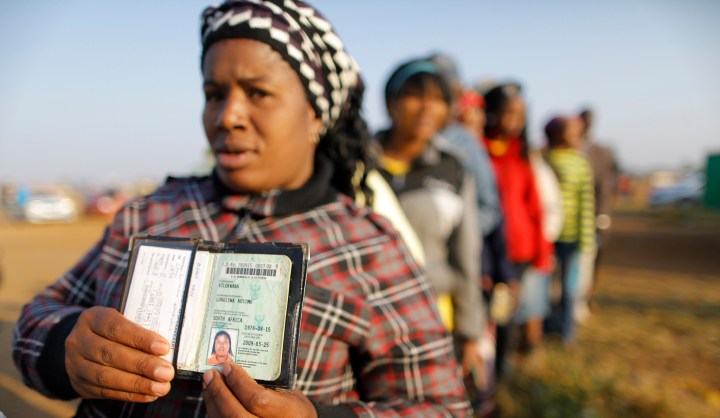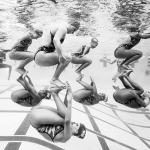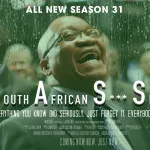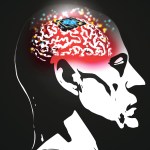Maverick Life
Social cohesion, nation-building and the likelihood of success

A recent study and seminar by the Mapungubwe Institute on the need to achieve greater “social cohesion” leads J. BROOKS SPECTOR to contemplate what social cohesion really means in today’s world.
The Mapungubwe Institute for Strategic Reflection (MISTRA) recently held a conference to its new study on the vexed question – for South Africans, at least – of something called “social cohesion.” This institute was created as a kind of exile home for policy wonks and members of a commentariat now out of power following the collapse of the Mbeki presidency. The session, “Nation Formation and Social Cohesion: an enquiry into the hopes and aspirations of South Africans”, was an effort to report back on a major study on the requisites for national social cohesion and why South Africans either do – or don’t – feel connected together as a nation, built on numerous interviews with a wide range of South Africans from across the nation.
Project leader Andries Oliphant set a tone for the discussions in citing 19th century Italian painter/writer/statesman Massimo d’Azeglio, a man who had worked for Italian unification under the Piedmontese monarchy, “Now that we have made Italy, we must make Italians.” In essence, d’Azeglio and Oliphant were both speaking to the notion that a nation is something consciously created by a political leadership class – from out of the unformed clay that constitutes a malleable subject population.
But is that how a real sense of national unity and purpose is actually achieved? Is it as simple as that? A survey of the circumstances, successes and failures of some other nations may be useful comparisons.
Consider, for example, the nation of Indonesia. When it gained its independence from the Netherlands after World War II, it was a colony that had been even more brutally occupied by the Japanese for four years, before the Dutch returned after the war to attempt to re-impose their rule. As a polity, it comprised some 3,000 or so islands and the population was divided into over 300 major ethnic groups and languages – scattered across a vast archipelago, thousands of kilometres, spread across the map. While the initial leadership of the country made some inept choices on economic policies, they made one crucial choice that helped keep the country together and fostered a real sense of national cohesion – all in less than a generation.
The country’s leadership adopted Malay as the nation’s official language and renamed it Bahasa Indonesia, or the Indonesian language. While they could easily have selected Javanese, given that language spoken by close to 80% of the total population, such a choice would have generated immense resentment on the part of every other ethnic group in the country – and probably encouraged regional separatist feelings – even beyond those that actually did occur. Instead, they picked the grammatically less complex Malay language, a language already known to most people to some degree, even if it had little or no snob appeal, given its place as a common market-place trade language, used by people of vastly different linguistic and ethnic stocks.
The national authorities set about creating a modern vocabulary suitable for a new national language, and all of the nation’s textbooks and most of its newspapers, magazines, radio broadcasts, and eventually television, were using this increasingly sophisticated national language. Language, together with the nation’s founding iconography – its heroes, myths and sagas, especially its recent war for independence and its rich historical record stretching back over a thousand years – all helped create what Cornell University anthropologist Ben Anderson had dubbed an “imagined community”. This is the way a society begins to believe in the power of its symbols and institutions and share them in an almost unconscious way. In fact, Anderson had first pointed to this powerful idea in the social sciences and political motivation when he observed the rapidly evolving Indonesian national identity back in the 1950s and ‘60s.
Except for the people in Irian Jaya (the western half of the island of New Guinea) who are Melanesian rather than Malayo-Polynesian populations like the rest of the nation (and now that the separatist movement in Aceh is over and that destructive political sore of East Timor is no longer a forced addition to Indonesia), it is extremely rare to find anyone in that country who thinks of himself as anyone other than a fully integral part of Indonesia. This remains true despite continuing very wide disparities in wealth and differential access to power. But it has taken about a half century to get to this point. And this has been achieved despite the complications of some very different cultures and a varied religious environment, despite also having the world’s largest Muslim population.
But then consider the United Kingdom of Great Britain and Northern Ireland. Watching the recent Commonwealth Games in Manchester, let alone noting the growing rumble over the imminent Scottish independence referendum, it seems increasingly clear the UK is anything but a united kingdom anymore – if, in fact, it ever really was one. The most obvious thing to note is the absence of an all-British team, as opposed to Welsh, English, and Scots and Northern Irish contingents, despite that 300 year-plus united-ness of the kingdom since that Act of Union in 1707. Curiously, and by contrast, Canada does not send over a Team Quebec and then one for all the rest – even though there is clearly a long history of an awkward national unity – as well as that seemingly “neverendingum”, as the Canadians have taken to calling their repeated votes over Quebec independence.
Some observers and historians argue that as long as the British Empire had its massive global presence, the Scots held a kind of pride of place presence as the muscle and sinew of empire. Many of its leading civil servants, military men and intellectuals came from Scotland, after all. But, as the empire shrank and then evaporated, the security of Scotland’s place on that much larger canvas downsized as well. This became ever more apparent as its industrial base fell away and as off-shore oil exploration and exploitation became the primary income generator instead. Post-Cold War, the obviousness of the need for an international security presence inside a larger Great Britain similarly withered as well. This seemed to be the case even though the UK is largely bound together by a common language (although Welsh, for example, is making a real comeback after a millennium, if its local patriots are to be believed). By itself, then, language is insufficient, by itself, to create a deep, broad-based social cohesion.
Moreover, in the years following after Cold War, earlier forms of national identity and nationhood have become more complex in other places as well. For some, Catalonia (at the minimum) is slowly but inexorably drifting away from the rest of Spain – in part because of a strong regional language tradition as well as a longstanding history as an independent nation until the sixteenth century and a sense that the national governmental fiscal structure ill-treats Catalonia. (It might well have become much more of a Mediterranean nation and less Spanish back in the 1500s – given its sovereignty over the Balearic Islands, Sicily, Sardinia and the southern half of Italy – save for the marriage between the two rulers, Ferdinand and Isabella, and their joint, final conquest of Moorish Andalusia.)
Meanwhile, after the collapse of communism in Eastern Europe, Czechs and Slovaks separated their two halves of Czechoslovakia, even though the languages were very close, because of rather different senses of nationality and a relative lack of commonly shared history, save for the period between the two world wars and then after liberation until the implosion of the Soviet Union. The Austrian Germans and Hungarians had ruled the two pieces very differently for a very long time, prior to their joint independence in 1918 as the Habsburg Empire collapsed.
And then, of course, there was the breakup of the Soviet Union itself, despite a shared imperial, then Soviet, history – as well as the ethnic tensions now in evidence in new nations like Ukraine as a result of mixed ethnic allegiances. This became that much more important when the ethnic Russians inside the independent Ukraine were now part of a single, smaller nation. Russia, itself, of course, has also proven unable to satisfactorily bring the Caucasus region’s many ethnicities into a convincingly shared “imagined community” that would allow a Chechen identity within a larger Russian one, for example. Yugoslavia effectively failed to survive the end of the Cold War as well, as it split into seven nations – and where two successor nations, Kosovo and Bosnia remain deeply divided by language, ethnicity or religion.
Or consider the case of Israel as a topic in the achievement of social cohesion (put the issue of the West Bank/Gaza aside for a moment). Within the boundaries of pre-1967 Israel, while the country calls itself the Jewish state, nearly a quarter of its population are Muslim or Christian Arabs. Nevertheless, for the larger share of the population, its reinvented (or resurrected) language – modern Hebrew – has been a key part of the creation of that country’s imagined community. In addition, universal military service (except for Israeli Arabs and the devoutly Orthodox Jews engaged in lifelong religious study) has also been a key element in the considerable achievement of building a sense of national social cohesion. And this has been constructed from a population that now includes a majority of Jews whose heritage draws either from the Arab/Middle Eastern world or Africa, rather than the older European diaspora.
Staying in the same part of the world, there has been a notable lack of any discernable social cohesion in Iraq, once the authoritarian Saddam Hussein regime came a violent end. And this has contributed to the consequent disintegration of what was a largely artificially created country built on the wreckage of three provinces of the Ottoman Empire. A decade of conflict has meant Iraq is splintered into fragments. In turn, the respective fates of the various ethnic and religious minorities – Yazidis, Chaldean Christians, Turcomans and Kurds have turned dark in the face of the rise of ISIS – even as the Sunni/Shia conflict has become brutal as well.
But consider the circumstances of the United States as well. This is a country with a strong belief that stems from a set of ideas, and a history of numerous waves of immigrants, all in search of religious, political, ethnic or economic freedom. The new arrivals were then presumptively exposed to a political culture largely held in common, and generally carrying out their lives in the same language, after the first generation of each immigrant family arrived in America, that is. For decades, their schools’ teachers insisted their young charges had to carry out their learning via English, and all of the readings of textbooks, novels and poetry preached the nation’s myths. The national sports with their ethnically identifiable sports heroes and, of course, the movies helped turn “greenhorns” into street-savvy Americans as well. And yet, in spite of this undoubted success for many millions, the smooth integration of many African Americans – essentially the country’s first ethnic minority – into the larger tapestry has still to be fully and successfully achieved. The shooting by a policeman of one black teenager in Ferguson, Missouri, and the aftermath of that death, illuminates this once again. Back in 1967, following a growing trajectory of the number of riots in the black neighbourhoods of urban America, the Kerner Commission (the blue-ribbon presidential commission assigned to investigate the causes of the growing storm of urban riots) had prophesied, “Our nation is moving toward two societies, one black, one white—separate and unequal”. And this was over a century after slavery ended, the former slaves were made citizens, and the rights of these “new” citizens were legally placed on a par with all others.
Contemplating these examples – and their successes and failures – it seems clear that a language in common, the participation in shared institutions such as universal military service (such as in the US during World War II and afterwards), an education with many common elements, and a generally acknowledged core of stories, myths, heroes and traditions are not sufficient, in themselves, to create the fullest sense of national cohesion. Central to MITRA’s brief for a greater national social cohesion was that South Africa needed a more equality and dignity for all citizens and less marginalisation many elements of the country.
This idea of social cohesion speaks to the “glue” that brings a society together, especially in the context of national cultural diversity, but it cannot be a top-down imposition on the part of the politicians over a population of blank slates. Rather, it is something that must grow organically out of a country’s society over time as people find the common ground among themselves. Keep in mind that Italy remains sharply divided between the Northern and Southern halves of that nation – a hundred years after the creation of new political facts on the ground.
And if the possible example of Scotland is any sort of guide, even three hundred years may not be enough, if the national social will is dying out or is absent. What this may well mean for the MITRA study proponents is that achieving the goal of greater social cohesion will not be a simple step-by-step march towards South Africa’s greater social cohesion. Politicians and others can lead – and they should – but, ultimately, the nation’s inhabitants must be the ones who must drive the process through their collective desires to become “one out of many”, or as the national coat of arms says in /Xam, “!ke e:/xarra//ke”. DM
Photo: A women holds up her South African ID book to cast her vote at a polling station in Bekkersdal, Johannesburg, South Africa, 07 May 2014. EPA/KIM LUDBROOK

















 Become an Insider
Become an Insider